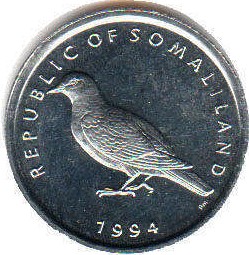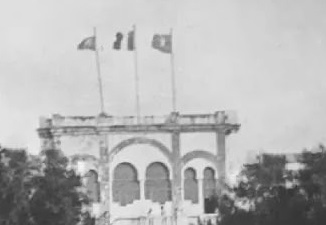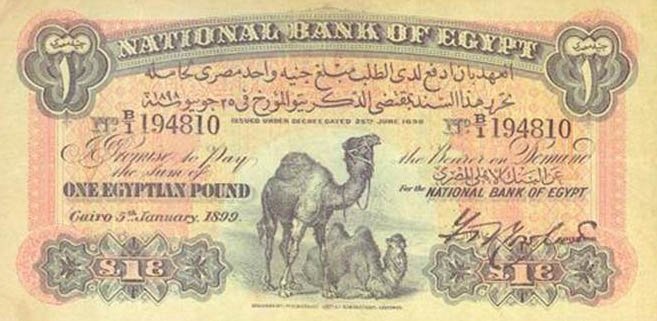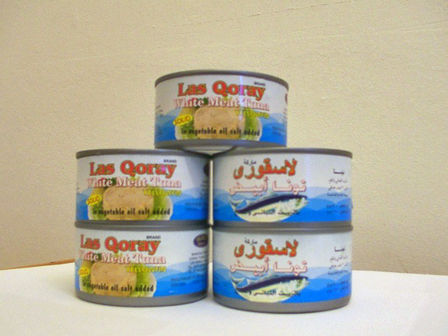|
Somali Shilling
The Somali shilling (sign: Sh.So.; so, shilin; ar, شلن; it, scellino; ISO 4217: SOS) is the official currency of Somalia. It is subdivided into 100 ''senti'' (Somali, also ), ''cents'' (English) or (Italian). Overview Early history The shilling has been the currency of parts of Somalia since 1921, when the East African shilling was introduced to the former British Somaliland protectorate. Following the 1960 independence and unification of the former territories of British Somaliland and Italian Somaliland, their respective currencies, the East African shilling and somalo (which were equal in value) were replaced at par in 1962 by the Somali shilling. Names used for its denominations were cent (singular: centesimo; plural: centesimi) and سنت (plural: سنتيمات), along with shilling (singular: scellino; plural: scellini) and شلن. Banknotes On 15 October 1962, the Banca Nazionale Somala (National Bank of Somalia) issued notes denominated as 5, 10, 20 and 100 sce ... [...More Info...] [...Related Items...] OR: [Wikipedia] [Google] [Baidu] |
Central Bank Of Somalia
The Central Bank of Somalia (CBS) ( so, Bankiga Dhexe ee Soomaaliya, ar, البنك المركزي الصومالي) is the monetary authority of Somalia. Somalia has struggled to reestablish a functioning state since the collapse of an authoritarian regime in 1991. Somalia has been cited as a real-world example of an anarchist stateless society and a country with no formal legal system. The Transitional Federal Government, formed in 2004, was recognized as the central government of Somalia. Among other duties, it is in charge of ensuring financial stability, maintaining the internal and external value of the local currency, and promoting credit and exchange conditions that facilitate the balanced growth of the national economy. Within the scope of its powers, it also contributes to the financial and economic policies of the State. [...More Info...] [...Related Items...] OR: [Wikipedia] [Google] [Baidu] |
Special Drawing Rights
Special drawing rights (SDRs, code ) are supplementary foreign exchange reserve assets defined and maintained by the International Monetary Fund (IMF). SDRs are units of account for the IMF, and not a currency ''per se''. They represent a claim to currency held by IMF member countries for which they may be exchanged. SDRs were created in 1969 to supplement a shortfall of preferred foreign exchange reserve assets, namely gold and U.S. dollars. The ISO 4217 currency code for special drawing rights is and the numeric code is ''960''. SDRs are allocated by the IMF to countries, and cannot be held or used by private parties. The number of SDRs in existence was around XDR 21.4 billion in August 2009. During the global financial crisis of 2009, an additional XDR 182.6 billion was allocated to "provide liquidity to the global economic system and supplement member countries' official reserves". By October 2014, the number of SDRs in existence was XDR 204 bil ... [...More Info...] [...Related Items...] OR: [Wikipedia] [Google] [Baidu] |
List Of States With Limited Recognition
A number of polities have declared independence and sought diplomatic recognition from the international community as sovereign states, but have not been universally recognised as such. These entities often have ''de facto'' control of their territory. A number of such entities have existed in the past. There are two traditional theories used to indicate how a sovereign state comes into being. The declarative theory (codified in the 1933 Montevideo Convention) defines a state as a person in international law if it meets the following criteria: # a defined territory # a permanent population # a government, and # a capacity to enter into relations with other states. According to the declarative theory, an entity's statehood is independent of its recognition by other states. By contrast, the constitutive theory defines a state as a person of international law only if it is recognised as such by other states that are already a member of the international community. Quasi-s ... [...More Info...] [...Related Items...] OR: [Wikipedia] [Google] [Baidu] |
Somaliland Shilling
The Somaliland shilling ( so, Shillin Somaliland, ar, شلن صوماليلاندي; abbreviation: SLS; symbol: /-, sometimes prefixed Sl.Sh.) is the official currency of the Republic of Somaliland. Overview The shilling has been the currency of parts of Somalia since 1921, when the East African shilling was introduced to the former British Somaliland protectorate. Following the 1960 independence and unification of the former territories of British Somaliland and Italian Somaliland, their respective currencies, the East African shilling and somalo (which were equal in value) were replaced at par in 1962 by the Somali shilling. Names used for its denominations were cent (singular: centesimo; plural: centesimi) and سنت (plural: سنتيمات), along with shilling (singular: scellino; plural: scellini) and شلن. In September 1994, the Parliament of Somaliland endorsed President Egal’s plans to introduce a new currency to replace the Somali shilling. The Somaliland shil ... [...More Info...] [...Related Items...] OR: [Wikipedia] [Google] [Baidu] |
Somaliland
Somaliland,; ar, صوماليلاند ', ' officially the Republic of Somaliland,, ar, جمهورية صوماليلاند, link=no ''Jumhūrīyat Ṣūmālīlānd'' is a ''de facto'' sovereign state in the Horn of Africa, still considered internationally to be part of Somalia. Somaliland lies in the Horn of Africa, on the southern coast of the Gulf of Aden. It is bordered by Djibouti to the northwest, Ethiopia to the south and west, and Somalia to the east.Encyclopædia Britannica, ''The New Encyclopædia Britannica'', (Encyclopædia Britannica: 2002), p.835 Its claimed territory has an area of , with approximately 5.7 million residents as of 2021. The capital and largest city is Hargeisa. The government of Somaliland regards itself as the successor state to British Somaliland, which, as the briefly independent State of Somaliland, united in 1960 with the Trust Territory of Somaliland (the former Italian Somaliland) to form the Somali Republic.''The New Encyclopædia Br ... [...More Info...] [...Related Items...] OR: [Wikipedia] [Google] [Baidu] |
Trust Territory Of Somaliland
The Trust Territory of Somaliland, officially the "Trust Territory of Somaliland under Italian administration" ( it, Amministrazione fiduciaria italiana della Somalia), was a United Nations Trust Territory situated in present-day Somalia. Its capital was Mogadishu and was administered by Italy from 1950 to 1960, following the dissolution of the former British Military Administration. It gained independence in 1960. Background In 1941, Italian Somaliland was occupied by British and South African troops as part of the East African Campaign of World War II. The British continued to administer the area until 1 April 1950. On that date, Italian Somaliland was made a Trust Territory, as stipulated by United Nations General Assembly Resolution 289 of 21 November 1949. This was the only case of a trusteeship being assigned to a defeated Second World War power. Indro Montanelli, a defender of Italian colonial rule, wrote in the late 1990s (when Somalia was devastated by civil war) tha ... [...More Info...] [...Related Items...] OR: [Wikipedia] [Google] [Baidu] |
Trust Territory Of Somaliland Somalo
The Somalo (plural: Somali, صومالي) was the currency of the Trust Territory of Somaliland administered by Italy between 1950 and 1960. The "Somalo" remained officially in use in the newly created Somali Republic until 1962. It was subdivided into 100 ''centesimi'' (singular: ''centesimo''). History The "Somalo" was authorized by Trusteeship Administration Ordinance No. 14 of 16 May 1950. A currency exchange was scheduled to last from 16 May until 22 July, but was eventually extended until 22 August. The somalo replaced the East African shilling at par and remained equal to it. It replaced the small amount of Italian lire in circulation at 1 Somalo = IT₤87.49. It was given an IMF parity of 124.414 mg fine gold, equal to one shilling sterling. Internationally, this currency became known as the Somali shilling when Somalia became independent on 1 July 1960. The Somalo/shilling was replaced at par on 15 December 1962 (along with the East African shilling circulat ... [...More Info...] [...Related Items...] OR: [Wikipedia] [Google] [Baidu] |
British Currency In The Middle East
The history and development of British currency in the Middle East emerged from the 19th century. British involvement in the Middle East began with the Aden Settlement in 1839. The British East India Company established an anti-piracy station in Aden to protect British shipping that was sailing to and from India. The Trucial States were similarly brought into the British Empire as a base for suppressing sea piracy in the Persian Gulf. Involvement in the region expanded to Egypt because of the Suez canal, as well as to Bahrain, Qatar, and Muscat. Kuwait was added in 1899 because of fears about the proposed Berlin-Baghdad Railway. There was a growing fear in the United Kingdom that Germany was a rising power, and there was concern about the implications of access to the Persian Gulf that would arise from the Berlin-Baghdad Railway. After the First World War the British influence in the Middle East reached its fullest extent with the inclusion of Palestine, Transjordan and Iraq. At f ... [...More Info...] [...Related Items...] OR: [Wikipedia] [Google] [Baidu] |
Economy Of Somalia
Somalia is classified by the United Nations as a least developed country, with the majority of its population being dependent on agriculture and livestock for their livelihood. The economy of Somalia is $49.918 billion by gross domestic product as of 2020. For 1994, the CIA estimated it at purchasing power parity to be approximately $30.3 billion. In 2001, it was estimated to be $4.1 billion. By 2009, the CIA estimated that it had grown to $75.731 billion, with a projected real growth rate of 2.6%. In 2014, the International Monetary Fund estimated economic activity to have expanded by 3.7% primarily. This expansion was driven by growth in the primary sector and the secondary sector. According to a 2007 British Chambers of Commerce report, the private sector has experienced growth, particularly in the service sector. Unlike the pre-civil war period, when most services and the industrial sector were government-run, there has been substantial, albeit unmeasured, private investment ... [...More Info...] [...Related Items...] OR: [Wikipedia] [Google] [Baidu] |
Bloomberg L
Bloomberg may refer to: People * Daniel J. Bloomberg (1905–1984), audio engineer * Georgina Bloomberg (born 1983), professional equestrian * Michael Bloomberg (born 1942), American businessman and founder of Bloomberg L.P.; politician and mayor of New York City (2002–2013) * Ramon Bloomberg (born 1972), American artist and film director Other uses * Bloomberg L.P., financial news and media company founded by Michael Bloomberg ** Bloomberg News, a news agency ** ''Bloomberg Businessweek'', weekly business magazine and website ** ''Bloomberg Markets,'' a monthly financial magazine ** Bloomberg Radio, a business radio network ** Bloomberg Television, a business news channel ***Bloomberg TV Canada ***Bloomberg TV Philippines ***Bloomberg TV Malaysia ** Bloomberg Terminal, desktop terminal and software widely used in the financial industry ** Bloomberg Data, API product using sftp or web service protocols to retrieve market data ** Bloomberg Government, online news service c ... [...More Info...] [...Related Items...] OR: [Wikipedia] [Google] [Baidu] |
Dollarization
Currency substitution is the use of a foreign currency in parallel to or instead of a domestic currency. The process is also known as dollarization or euroization when the foreign currency is the dollar or the euro, respectively. Currency substitution can be full or partial. Full currency substitution can occur after a major economic crisis, such as in Ecuador, El Salvador, and Zimbabwe. Some small economies, for whom it is impractical to maintain an independent currency, use the currencies of their larger neighbours; for example, Liechtenstein uses the Swiss franc. Partial currency substitution occurs when residents of a country choose to hold a significant share of their financial assets denominated in a foreign currency. It can also occur as a gradual conversion to full currency substitution; for example, Argentina and Peru were both in the process of converting to the U.S. dollar during the 1990s. Origins After the gold standard was abandoned at the outbreak of World W ... [...More Info...] [...Related Items...] OR: [Wikipedia] [Google] [Baidu] |
Transitional Federal Government
The Transitional Federal Government (TFG) ( so, Dowladda Federaalka Kumeelgaarka, ar, الحكومة الاتحادية الانتقالية) was internationally recognized as a provisional government of the Republic of Somalia from 14 October 2004 until 20 August 2012, when its tenure officially ended and the Federal Government of Somalia was inaugurated. Succeeding the Transitional National Government (TNG), the TFG was the second interim administration aiming to restore national institutions to Somalia after the 1991 collapse of the Siad Barre regime and the ensuing civil war. The TFG was established as one of the Transitional Federal Institutions (TFIs) of government as defined in the Transitional Federal Charter (TFC) adopted in November 2004 by the Transitional Federal Parliament (TFP). Background Legal structure of Somalia The legal structure in Somalia was divided along three lines: religious law, traditional clan law and civil law. Religious law Followin ... [...More Info...] [...Related Items...] OR: [Wikipedia] [Google] [Baidu] |






